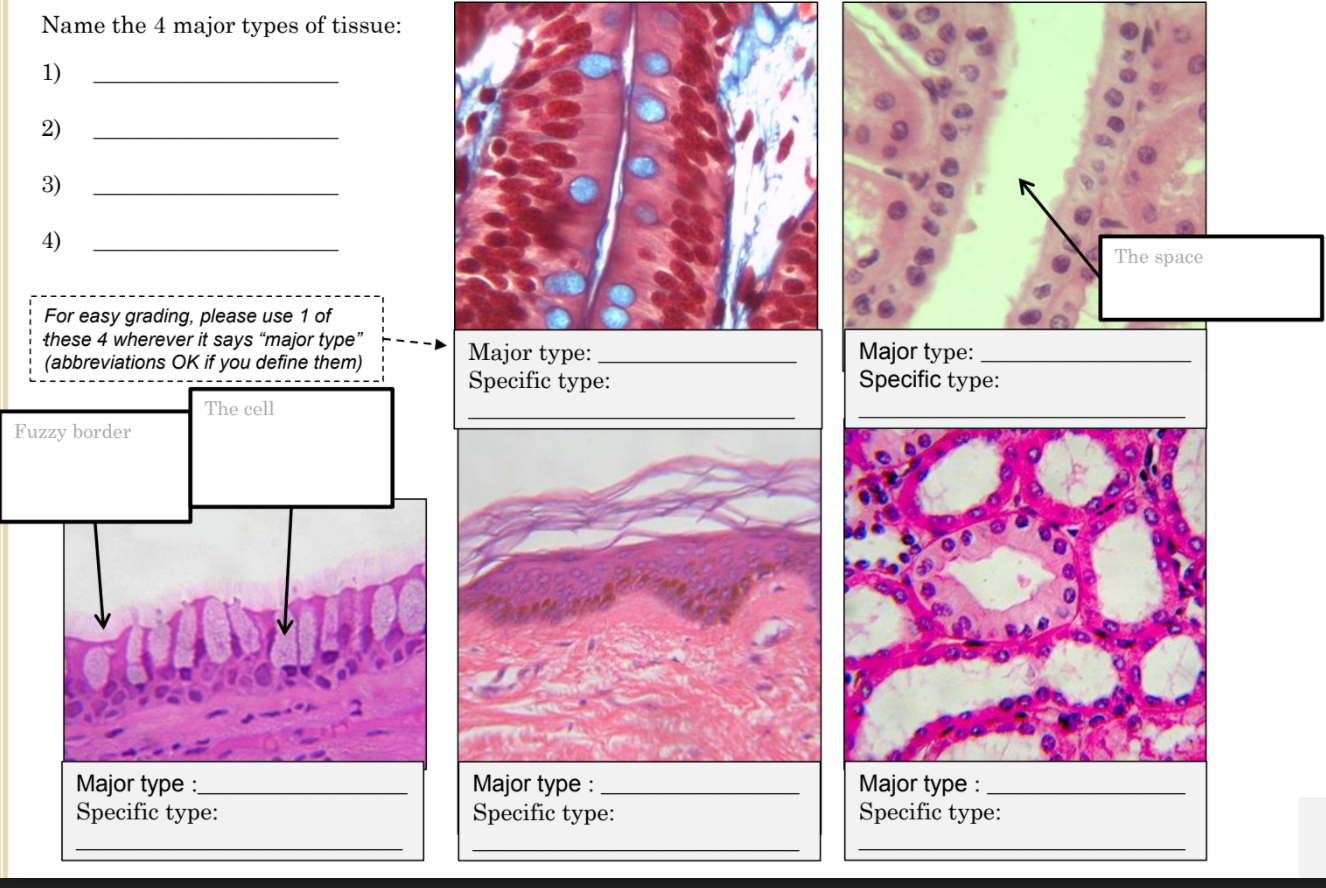3.6: Practice in Identifying Different Types of Tissues
- Page ID
- 59381
Name 2 major components of Connective Tissue:
1. ____________________________________________________________
2. ____________________________________________________________
Name 2 components of Extracellular Matrix:
1. ____________________________________________________________
2. ____________________________________________________________
Name 3 major connective tissue fibers:
1. ____________________________________________________________
2. ____________________________________________________________
3. ____________________________________________________________
Name the 3 types of muscle tissue:
1. ____________________________________________________________
2. ____________________________________________________________
3. ____________________________________________________________
Name the 2 major cell types in neural tissue:
1. ____________________________________________________________
2. ____________________________________________________________
Epithelia can be divided into two basic groups based on the number of cell layers. These are:
1. ____________________________________________________________
2. ____________________________________________________________
Name two epithelia that can be considered an exception:
1. ____________________________________________________________
2. ____________________________________________________________
LAB 3 EXERCISE \(\PageIndex{1}\)



IDENTIFY THE TISSUES SHOWN:
When storing a microscope, you should always follow this list:

- Remove any slide found on the stage and return it to the slide box.
- Rotate the smallest lens or no lens into place above the stage. Lower the stage a few turns.
- Loosely coil the cord in your hand starting near the microscope and working toward the plug.
- Hang the coiled cord over one ocular lens.
- Look at the number on the back of the microscope, return that scope to its numbered box.
- If there’s already a microscope in that numbered box, check its number and move it. If it is not numbered simply push it to the back of the box and place yours closer to the front. We have a few extra microscopes which we store in this fashion.

